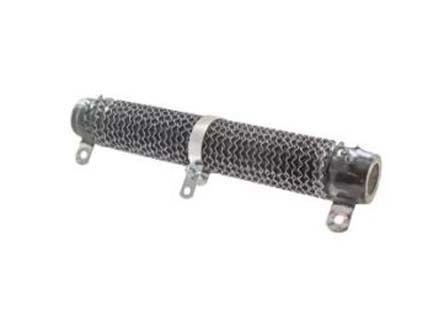Okay, maybe we need to back up and ask why do this.
Why does performance with a reactive load matter? Because you could have two amps with identical specs on 8 ohm resistors that react differently with 8 ohm reactive loads. Let us say a pair of 40 watt amplifiers.
Why does this happen or what happens?
Firstly a reactive load has an impedance that varies with frequency, so if an amplifier has more output impedance vs another, it will have a more variable frequency response. This is so simple you don't really need to test it. You can measure output impedance and match it with the impedance curve of your speaker to see if it matters.
Another difference could be limited current. It would need 2.25 amps at 8 ohms to manage 40 watts into a resistor. Let us say its max current is only 2.5 amps. If the load were an 8 ohm impedance with a 45 degree phase angle it would require 3.17 amps. If one 40 watt amp has 2.5 amp current max and the other has 20 amps current max one will run out of steam and distort while the other will not care.
Yet another difference is thermal dissipation capability of the output stage. 40 watts into 8 ohms in a resistor is one thing. If it is 8 ohms impedance with a 45 degree phase angle the output stage will see 17.1 watts come back from the load and have to dissipate that extra heat. If one amp is a proper amp with good external heatsinks and appropriately sized output components then no problem. If it has a flimsy excuse for heatsinks internally like a cheap AVR those extra watts being dissipated could in time overheat the output stage.
I think these are the main things making a reactive load difficult for an amp.
The first is a simple measurement of output impedance to know what we want to know.
Current capability can be determined by simply using a lower impedance. So maybe test at 1, 2, 4, 8 and 16 ohms with 500 hz or 1 khz. You really don't need reactance to determine that. Just need to know the current capability.
The thermal dissipation issue is a tougher one. Do some of you know a good non-destructive way to test this? Just off the top of my head one issue is class D, class A, class AB amps are different animals in this regard.
Can tone burst testing into different impedances tell us just as much with less danger?
If I've missed something important don't be shy about saying so. It is late where I am, was a long day, and maybe I'm just dense right now.
Random other things:
Not very common, but you can run into voltage limiting at higher impedances.
You could have instability caused by reactive loads and unstable feedback arrangements, but you'll likely only see this at high and low frequencies most of the time, and hopefully they are a thing of the past.
Some amps have advanced protection circuitry to protect themselves these days, and that interferes with obtaining limits of operation in testing.

